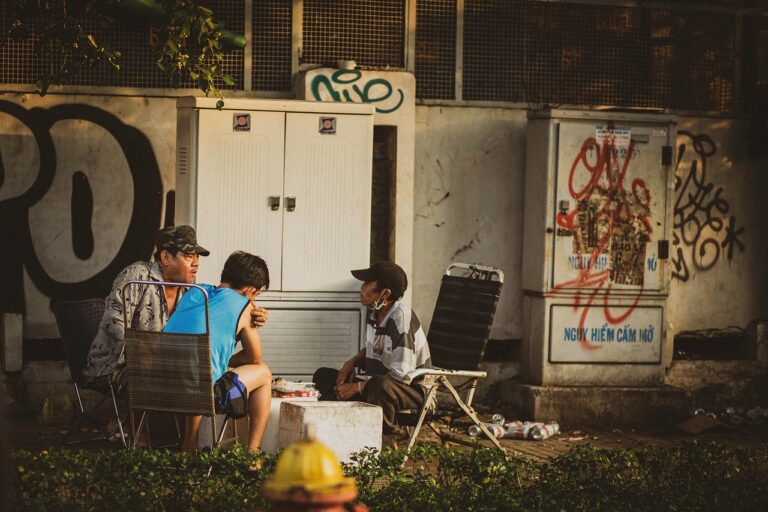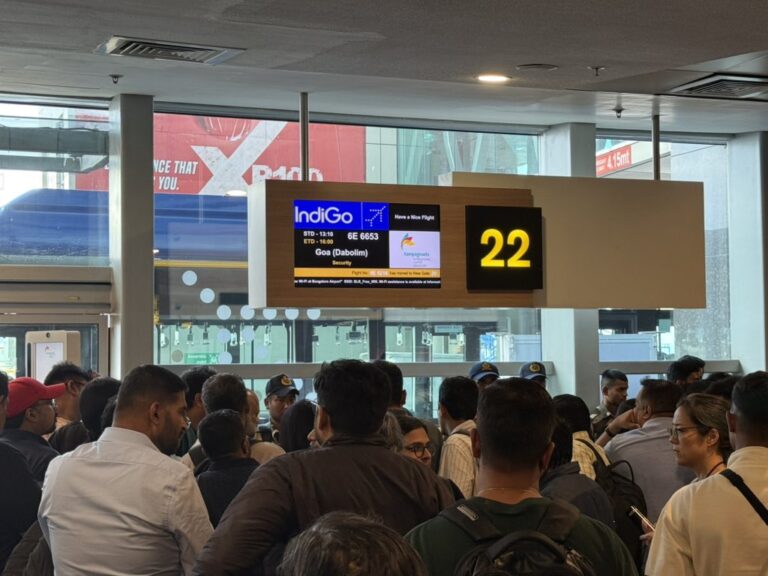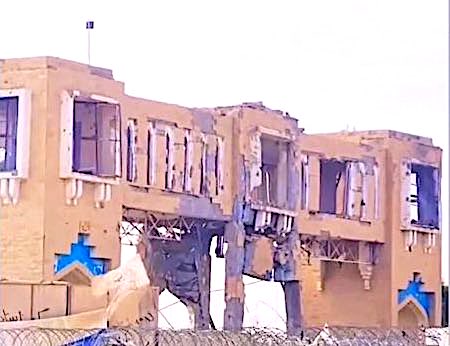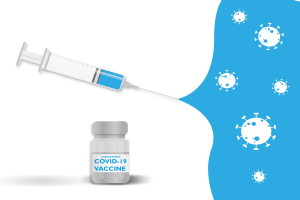
The threat of a dangerous new COVID-19 variant remains very real, warns WHO
Geneva: Globally, reported COVID-19 cases and deaths continue to decline. Last week, just over 15 thousand deaths were reported to WHO – the lowest weekly total since March 2020.
During the week of 18 through 24 April 2022, over 4.5 million cases and over 15 000 deaths were reported, decreases of 21% and 20% respectively, as compared to the previous week.
“This is a very welcome trend, but it’s one that we must welcome with some caution,” World Health Organization (WHO) Director-General Dr Tedros Adhanom Ghebreyesus, said here. He cautioned that as many countries reduce testing, WHO was receiving “less and less” information about transmission and sequencing.
“This makes us increasingly blind to patterns of transmission and evolution,” he said.
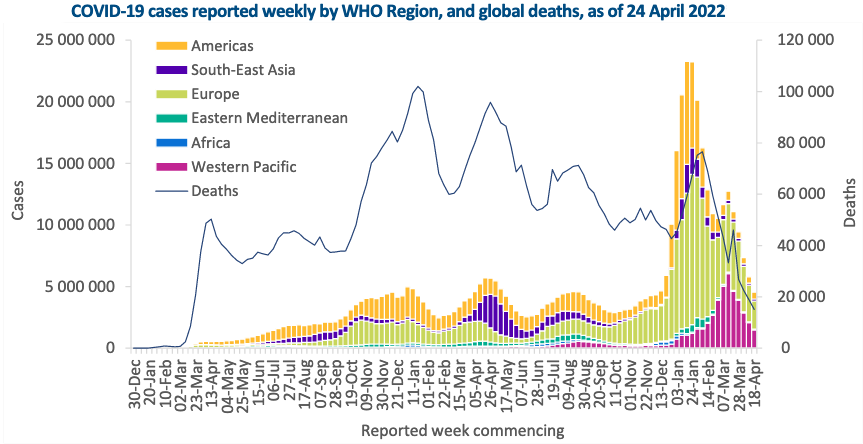 Significantly, an increase in the number of new weekly cases was reported from the Regions of the Americas (+9%) and the African Region (+32%), and the number of new weekly deaths increased in the South-East Asia Region (+41%), due to a delay in reporting of deaths from India, and in the Africa Region (+110%).
Significantly, an increase in the number of new weekly cases was reported from the Regions of the Americas (+9%) and the African Region (+32%), and the number of new weekly deaths increased in the South-East Asia Region (+41%), due to a delay in reporting of deaths from India, and in the Africa Region (+110%).
As of April 24, 2022, over 500 million confirmed cases and over six million deaths have been reported globally.
At the country level, the highest numbers of new weekly cases were reported from Germany (675 022 new cases; –13%), the Republic of Korea (589 442 new cases; –39%), France (542 896 new cases; –34%), Italy (419 374 new cases; –1%), and the United States of America (298 306 new cases; +21%).
The highest numbers of new weekly deaths were reported from the United States of America (2 354 new deaths; –24%), the Russian Federation (1 402 new deaths; –21%), the Republic of Korea (1 041 new deaths; –38%), Italy (1 007 new deaths; +7%), and the United Kingdom (903 new deaths; –47%).
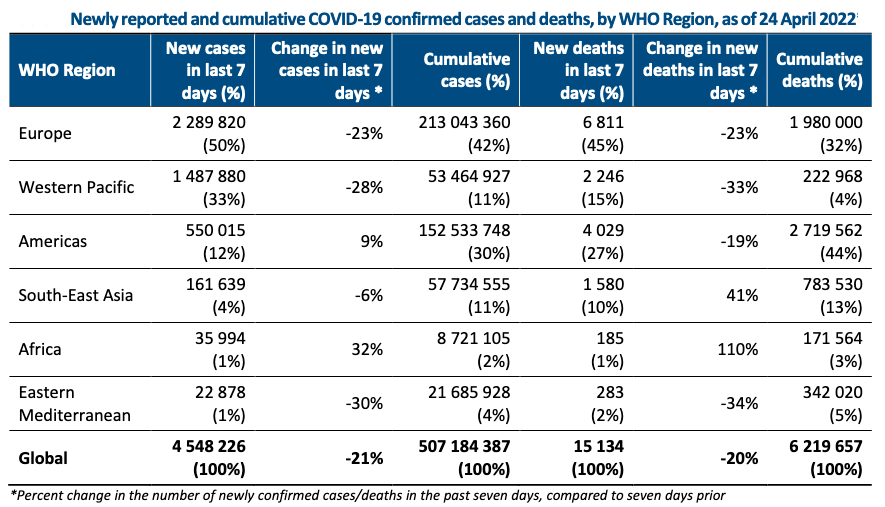 Dr Ghebreyesus warned that “this virus won’t go away just because countries stop looking for it. It’s still spreading, it’s still changing, and it’s still killing. The threat of a dangerous new variant remains very real – and although deaths are declining, we still don’t understand the long-term consequences of infection in those who survive”.
Dr Ghebreyesus warned that “this virus won’t go away just because countries stop looking for it. It’s still spreading, it’s still changing, and it’s still killing. The threat of a dangerous new variant remains very real – and although deaths are declining, we still don’t understand the long-term consequences of infection in those who survive”.
When it comes to a deadly virus, ignorance is not bliss, he said and said WHO continues to call on all countries to maintain surveillance.
Pointing out that this week is World Immunization Week, he said this was an opportunity to highlight the “incredible power of vaccines”, not just to save lives, but in the words of this year’s theme, to offer the opportunity of “A long life for all”.
He though noted that around the world, the pandemic had caused severe disruptions to routine immunization programmes, putting millions of children’s lives at risk, and opening the door to fresh outbreaks of measles and polio.
Referring to his recent visits to India and Nepal, the WHO Director-General said both these countries were getting closer to vaccinating 70 per cent of their populations against COVID-19 by the middle of the year, and they were also rolling out boosters to the most vulnerable.
“As a result, both countries are now seeing a decoupling between cases and deaths. This is the level of vaccination we need to see in all countries,” he said.
Pointing out that almost 60 per cent of the world’s population has now completed a primary course of vaccination, he lamented that only 11 per cent of the population of low-income countries had completed the primary course.
Closing this gap remains essential to ending the pandemic as a global health emergency, he said and added that one of WHO’s priorities is supporting countries to conduct catch-up campaigns to protect as many children as possible, as fast as possible.
And it’s not just vaccines, he said referring to WHO’s recommendation of antiviral combination nirmatrelvir and ritonavir, also known as Paxlovid, for patients with mild or moderate COVID-19 that are at high risk of hospitalization, on April 22, 2022.
“This treatment helps prevent hospitalizations and is easy to administer,” he said.
However, he noted that several challenges were limiting its impact. “It is largely not available in the vast majority of low- and middle-income countries, and requires prompt and accurate testing before administration, within five days of symptom onset. This is compounded by a lack of price transparency in bilateral deals made by the producer,” he said.
– global bihari bureau


